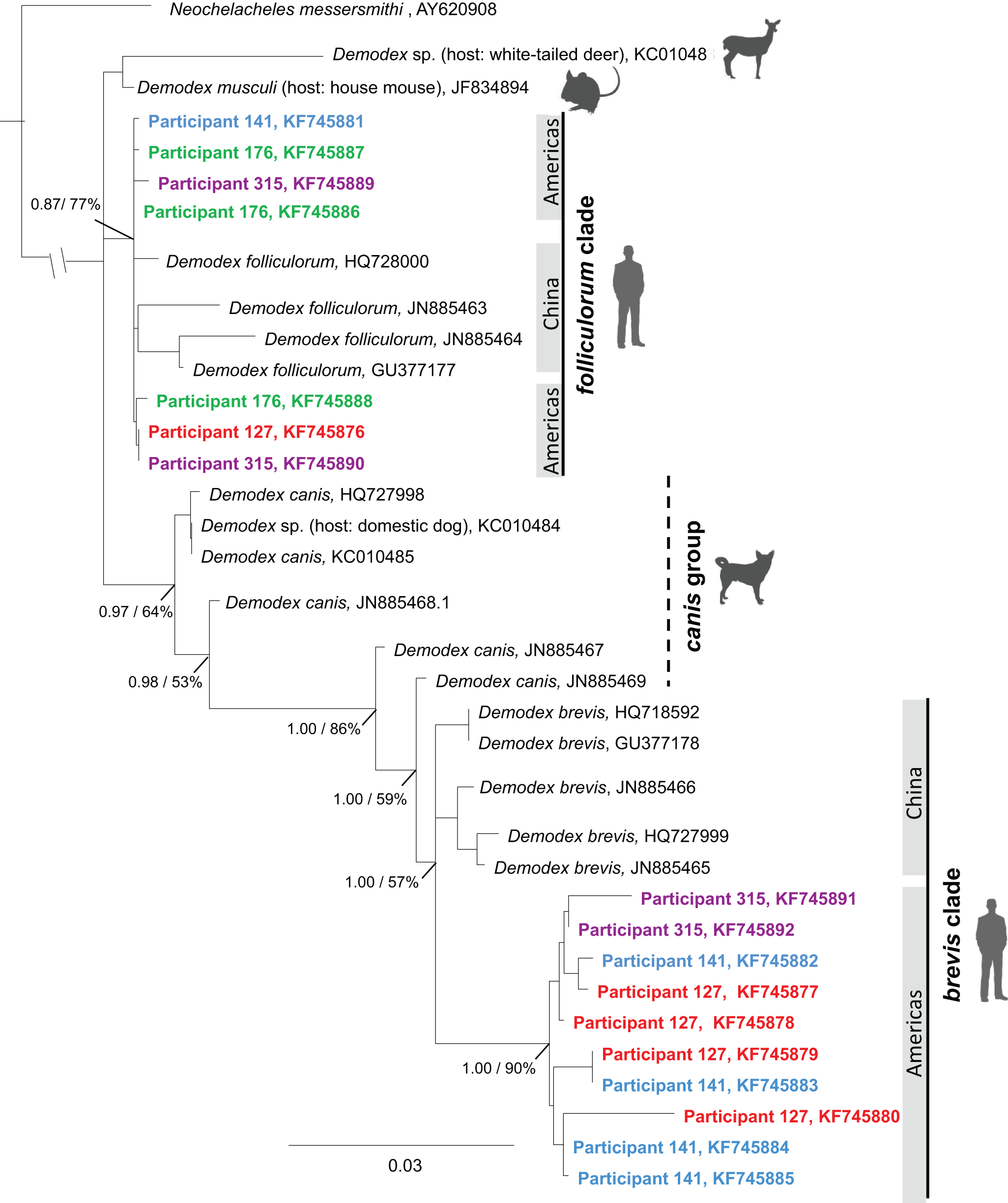Demodex mites are tiny little creatures that live in mammals’ hair follicles. I first heard about them years ago, when I watched a documentary with my science class back at PN Girls’ High. It was about animals that are parasitic on humans, and after the segment on eyelash mites, I don’t know about the girls but I felt itchy for days!
For eyelash mites live where the name suggests, in the follicles of our eyelashes. (There are 2 species: Demodex folliculorum and D. brevis.) The common name gives an idea of just how small they are: adult length is 0.3 to 0.4 mm. They spend a lot of time inside the eyelash follicles, snacking on the sebum and dead cells (or maybe the bacteria) that accumulate there. But at night… at night, they come out and wander across our faces as we sleep, achieving a speed of 10cm/hr or more. Which doesn’t sound much, but when you remember how small they are, that’s quite an achievement. Presumably that’s also when they mate, which they do where an eyelash follicle opens to the skin’s surface.
I was surprised to discover that these mites lack an anus. This sounds somewhat problematic, but the eyelash mites have survived, with their human hosts, for at least tens of thousands of years, so they obviously cope somehow. And when they die, their little bodies degrade and release their contents. On your face. Or in the follicles where they spent most of their lives.
Though demodex mites are tiny, there are an awful lot of them. There may be only one or two per hair follicle (they don’t restrict themselves to the eyelashes), but an individual human has around 5,000,000 hairs on their body (Thoemmes et al., 2014), so that’s an awful lot of available places for a mite to set up home in.
Thoemmes & her co-workers were interested in the genetic diversity of these mites. They predicted there’d be geographically-distinct lineages, because the tiny animals are very closely associated with their hosts and don’t seem to be particularly mobile between hosts. However,
if Demodex lack strong geographic structure, it suggests the movement of mites among humans must occur very frequently (perhaps even with social greeting rituals) and across large geographic distances.
To test this hypothesis, the team examined adults (from a single North American population) visually, but also tested skin scrapings for the presence of mite DNA. The results showed that despite being able to see mites on only 23% of their sample population, 16S rDNA sequencing indicated that 100% of those sampled actually had mites present. The latter matched other research showing that 100% of dead bodies tested positive for the presence of Demodex.

Figure 2 from Thoemmes et al. (2014): Maximum likelihood (ML) phylogeny of mites based on 18S rDNA sequences.
While the results of their phylogenetic analysis of the mite DNA are based on samples from only 29 people, they’re interesting nonetheless. It appears from that analysis that the 2 species, D.folliculorum & D.brevis, probably colonised humans at different times. Because D.brevis‘ DNA indicates that their nearest living relatives are mites living on dogs, then the researchers suggest that we acquired this species from our doggy friends, perhaps as recently as 11,000 years ago but possibly as many as 40,000 years ago. There does appear to be some regional variation (based on a comparison of the US data with earlier sequencing results from Chinese populations), but there’s also quite a bit of variation within populations, due perhaps to individual humans picking up different mites on different occasions as individual humans came into close physical contact.
And after reading all this & watching a few videos, I feel itchy again!
Thoemmes MS, Fergus DJ, Urban J, Trautwein M, Dunn RR (2014) Ubiquity and Diversity of Human-Associated Demodex Mites. PLoS ONE 9(8): e106265. doi:10.1371/journal.pone.0106265